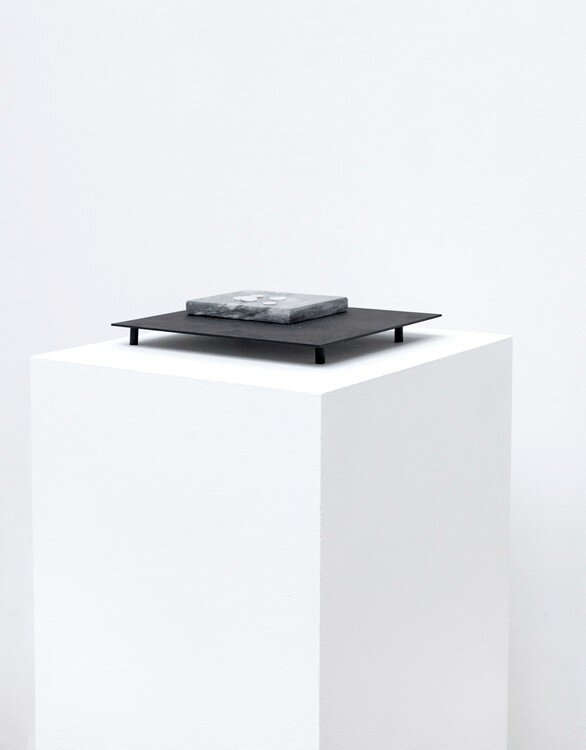Marianne Bjørnmyr: Between a Rock and a Hard Place
Photomonitor UK | September 2019
In January 1951 Norway made a lucrative and top secret deal with the USA, signing a document securing the export of all Norwegian Niobium found in the Dolomite quarry Ulefoss, to the USA for the following 10 years. The Norwegian Niobium was used in the American Nuclear Propulsion Program, a program for the development of atomic reactors used to propel aircraft and rockets during the Cold war. The deal meant a tremendous financial income for Norway, and large expansion in the village where the local miners were employed. None of this information was revealed for another 54 years.
This is Marianne Bjørnmyr’s starting point for her new project, Between a Rock and a Hard Place and a reflection upon humanity’s ruthless pursuit of progress. Through a mix of images and objects, the artist provides a fascinating insight into the history of Norway and the complex ways it intersects with the global economy.
The work displays images from disused and active Dolomite quarries in Northern Norway. It questions geography, landscape, and human societies. It comes as no surprise that the project ventures into diverse landscapes of varying geopolitical significance. The artist has long been fascinated by the unseen, the subject matter that doesn’t easily present itself to the camera. In contrast to the urge to capture a dramatic moment, Bjørnmyr’s work attempts to photograph the invisible, to evoke a sense of the cycles of things and reflect upon the longer term reverberations of war and conflict minerals worldwide.
In the vision of this sort of a landscape awakening, Bjørnmyr’s objects, made of marble, together with photographic prints taken in disused and active Dolomite quarries in Northern Norway, address issues such as the changeability of materials, nature, and value and human society. By addressing this through photography, Bjørnmyr raises the question of how her chosen medium can respond to such events and concepts. The result is an arduous project, a personal journey in which she ultimately handles the complexity of material representation in these fragmented times. The photographic prints are mysterious, powerful, singular and they fuse together these different versions of striving for beauty, wealth and power.
Part of the project is an original Molybdenum mirror, placed in a marble frame. Solid molybdenum mirrors are currently the most durable mirrors used in contemporary warfare and laser guns. Other objects are five exact replicas of Norwegian coins from WW2 created with marble dust and resin. The coins were made of iron and brass during the war due to the restrictions in use of more valuable metals like copper. The coin replicas and the marble photographs act as a reminder of the paradox between use and value of different non renewable materials.
The work Between a Rock and a Hard Place asks questions on the paradox of how the value of different metals and minerals affect wealth and conflict at the same time. The boundary between us as humans, and nature as other, dissolves. Being in this areas for that matter—one becomes aware of how vulnerable this circumpolar geography is to climate change and industrial extraction of its natural resources. In this project, the invitation to connect with nature in a deeper, more sensitive way feels particularly urgent. A few decades ago, artists found aesthetics of geology particularly fascinating for the challenge of its double invisibility: on one side, the idea of ‘deep time’ threatened the three classical temporal dimensions within which humans arrange life experience: past, present and future; on the other hand, the withdrawal of visibility made it a complex object to imagine and visualise. With its unyielding remoteness and inert temporality, geology has become today a model for the material conditions of our contemporary life.
Throughout history, geological conditions have shaped and influenced human communities, where the value and supply of minerals, metals, fossil fuels and favourable land conditions have driven society’s development. Marianne Bjørnmyr’s use of photography as documentation of this experience is a necessary concretisation of the specific experience even though the photographs constitute more a new language than a proof of reality, a tool to reframe and resist capitalist exploitation of nature.






